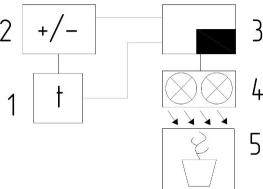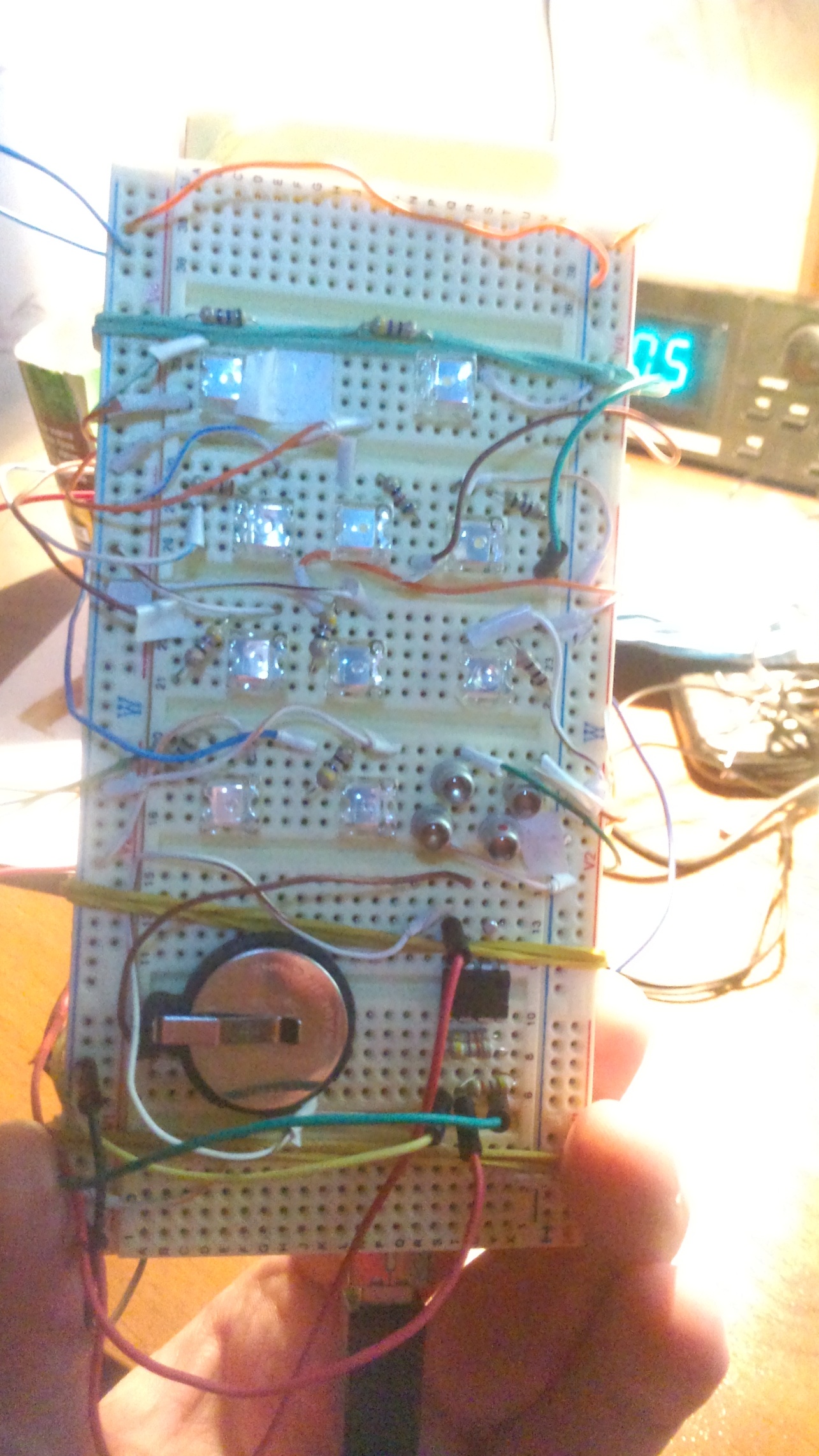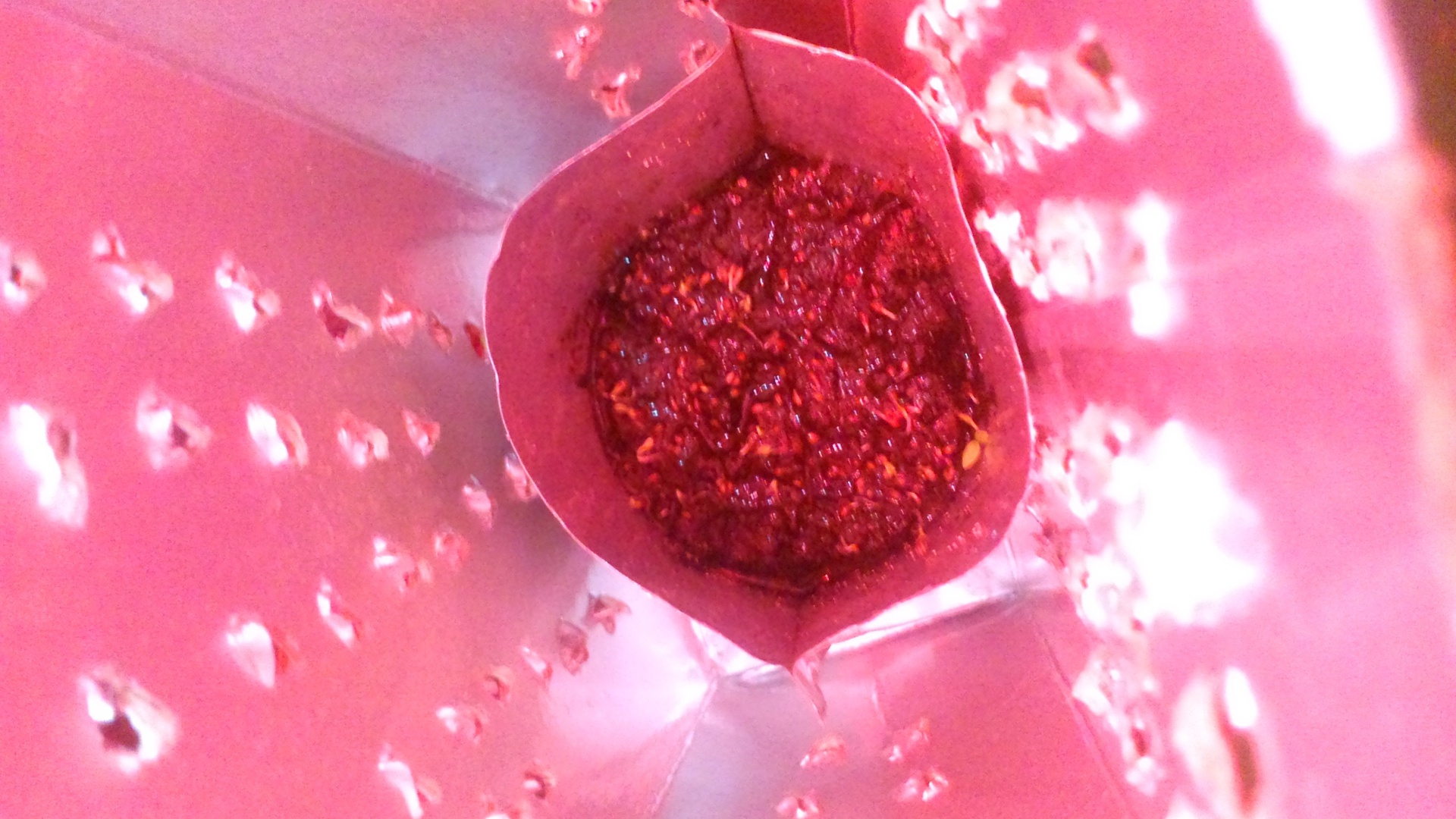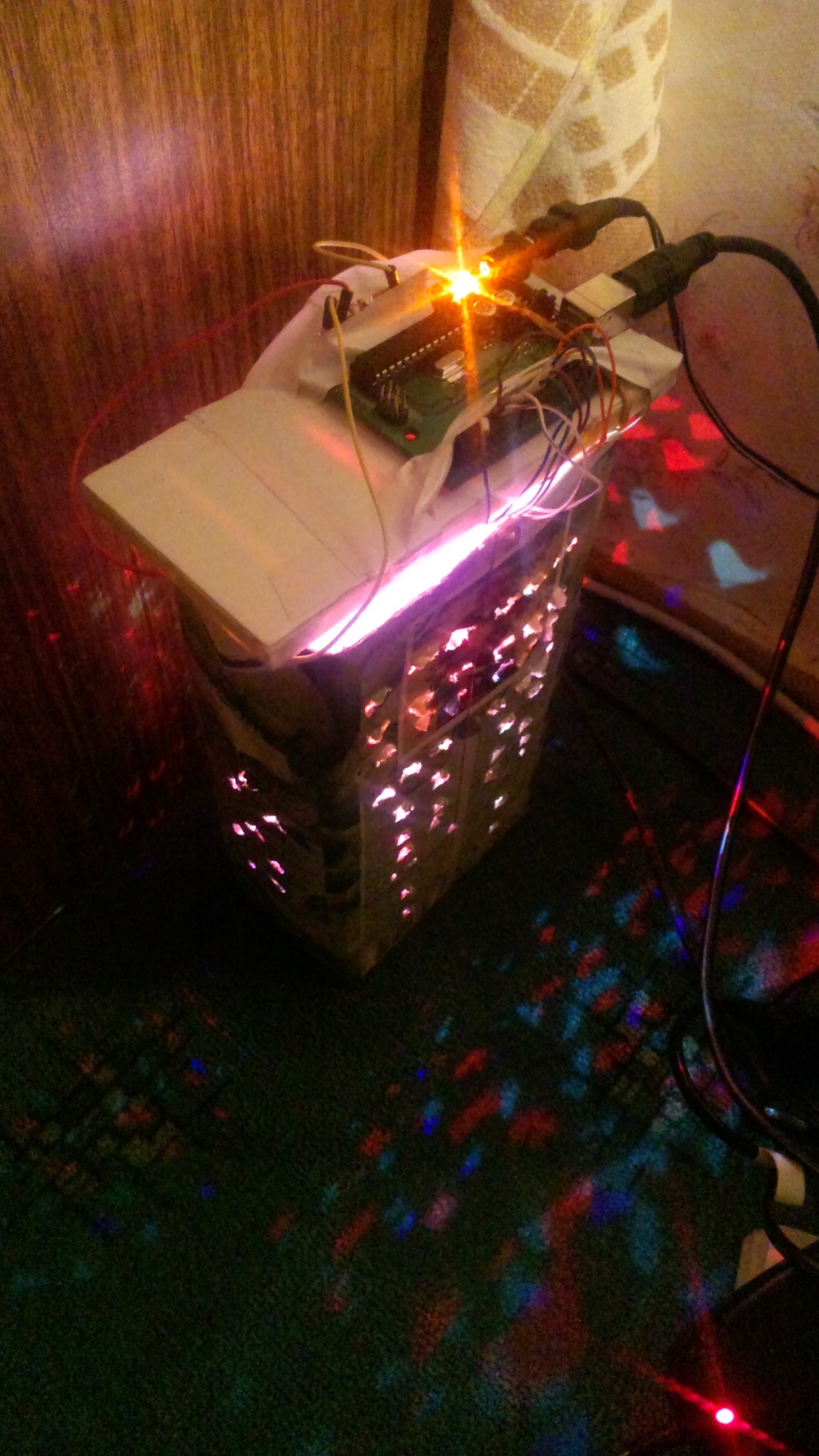Sickly Dill and Man-Made Sun
 Dear readers of “Habra”, on this wonderful Friday day, I would like to share with you the experience of growing greenery, with artificial LED lighting under the control of Arduino (Craftduino). You should not wait for technical revelations from the article, because the electronics engineer is disgusting from me, and everything was done in a hurry, but under the cut I promise a couple of creepy photos and as a result the comparison of parsley grown in the winter on the windowsill and the one that grew under the LEDs. If you do not have a heightened sense of perfectionism in the design of electronics, then you are welcome under the cat ...
Dear readers of “Habra”, on this wonderful Friday day, I would like to share with you the experience of growing greenery, with artificial LED lighting under the control of Arduino (Craftduino). You should not wait for technical revelations from the article, because the electronics engineer is disgusting from me, and everything was done in a hurry, but under the cut I promise a couple of creepy photos and as a result the comparison of parsley grown in the winter on the windowsill and the one that grew under the LEDs. If you do not have a heightened sense of perfectionism in the design of electronics, then you are welcome under the cat ...UPD: As promised, I reloaded the images on habrastorage, and additionally corrected the error in the image with the graphs (there was an incorrect legend to the graphs).
"Do you remember how it all started…"
')
It all began with a desire to satisfy scientific curiosity, and I can check whether I can wipe at the creator’s plan and grow a plant no worse than under the rays of our celestial star.
To do this, several packages of parsley curly from the manufacturer Happy Plant were bought, the plants were from the same batch as the seller assured me, therefore with more or less the same temperature in the room and similar irrigation mode, the lighting could be considered as the main factor distinguishing 2 planted samples .
In December, sample No. 1 was planted on a sunny and warm window-sill, which quietly grew peacefully without additional glare; the sample successfully increased the average light parameters were recorded and the growth process was recorded.
And it was time to plant a second sample, which was supposed to grow exclusively in artificial light, with displaced circadian rhythms (the plant was lit at night, and in the morning it was in darkness)
"We were born to make a fairy tale come true!"
Due to my almost complete incompetence in electronics, the following decision was made. Take an Arduino, take a mock-up board, stick piranha-type LEDs into it, install a real-time clock chip, pack it all up, shove the plant in a juice box and cover it with a mock-up with light bulbs.
It is said - done, but for the beginning it was necessary to estimate how many diodes are needed and how it will work.
The first criterion was my unwillingness to complicate the circuit, with transistor keys and power the LEDs directly from the ports of the Arduino, at the rate of 1 Piranha to 1 port.
The second criterion was the desire not only to illuminate the plant, but to simulate the change of the time of day.
The third criterion was the need to match the light in artificial and natural light.
As a result, it was decided to conditionally simulate the following modes of the time of day:
| one | dawn / twilight | 2100 |
| 2 | morning evening | 3600 |
| 3 | around noon | 5200 |
| four | the sun is at its zenith | 6500 |
The color temperature was estimated by eye on the basis of data walking on the Internet.
To see how the lighting will correspond to these modes was carried out modeling. In a first approximation, the model of the blackbody was adopted as a natural light curve. The graph of artificial lighting was based on datasheets for LEDs, the radiation of the LED was viewed as a Gaussian curve , which was then added together. In the end, get these graphics.

As can be seen from the graphs, the curves, to put it mildly, do not match each other, but I decided to make an assumption, assuming that the main thing for photosynthesis is red and blue, and the others are not as important as the practice shows, the assumption played a bad joke on me, but more on that later .
"I blinded him from what was"
According to the simulation results, the exact number of LEDs was determined.
The process of scraping across the bottom of the barrel was carried out, and the following LEDs were found (it was certainly possible to think of something better, but this is what I had on hand.
- BL-760RUWC, piranha LED ultra-white 160 "5000 mcd - 4 pcs.
- BL-760RURC, piranha LED ultra-red 160 "1000 mcd 660nM - 2 pcs.
- BL-760RUBC, piranha LED ultra-blue 160 "2000mKd 470nM -1 pcs.
- BL-760RUEC, piranha LED ultra-orange 160 "1500mKd 630nM - 2 pcs.
- BL-FL7660UVC, piranha LED ultra-violet 75 "220mKd 405nM - 1 pc.
- AL102BM red 30 ”0.2 mKd 700 nM LED - 4 pcs.
With the maximum on-mode lighting (conditional sun at the zenith), the illumination differed from the average natural illumination by no more than 10%.
As can be seen from the list, in addition to piranha, there are also AL102BM LEDs, they had to simulate the far red light, which was supposed to inform the plants that night had come, but first they were very weak, and secondly the wavelength was shorter than necessary by about 50 nm but I decided that they let it be, the good is not asked.
In the end, all this “happiness was collected (spoiler):
LED lamp photos:









As can be seen from the last photo, the plant was clearly not boring, he had his own disco :)
In the process of assembling, I discovered several truisms.
1) Do not use twisted pair for connections longer than a jumper.
2) Do not use prototyping boards for devices whose lifetime is more than 1 day
3) Do not trust the electronics assembled taking into account the first two factors, periodically checking it.
One way or another, it was too late to retreat, and after several reassemblies, the scheme was able to work out the time limit assigned to it in 20 days.
If anyone is interested, the scheme basically looks like this

I wanted to make a thunderstorm, but I received a goat.
What was the result? As a result, at the end of 20 days a comparison of plants was made.

In the photo on the left, a plant that grew under natural light on a windowsill, on the right, what grew in a merry juice box.
It is easy to see that the plant is grown under natural light, and it is full of health, but his fellow was much less fortunate. Germination turned out to be less, the growth is slower, moreover, the plants grew refined and elongated. What served as the wrong choice of light, with an excess of red, or perhaps a displacement of biorhythms could also have a negative impact on growth. Nevertheless, the plant has grown, and even showed that using lighting you can control its morphological parameters, and this is also the result.
Separately, I want to note that in the course of the experiment, not a single plant was damaged, the weak parsley was moved to the balcony and after a couple of days it began to grow rapidly.
Ps Perhaps you might have a little confused article title. Indeed: “Why is the article called Fetid Dill, even though parsley grew?” You ask me. Just during the experiment, these curly fluffy creatures became almost like children to me and I gave them the names Dill first and respectively second. Love nature, my friends, and have a good Friday.
Pps Thank you all for the comments, I really appreciate your opinion and, if possible, consider it when making corrections to the article.
Source: https://habr.com/ru/post/184144/
All Articles